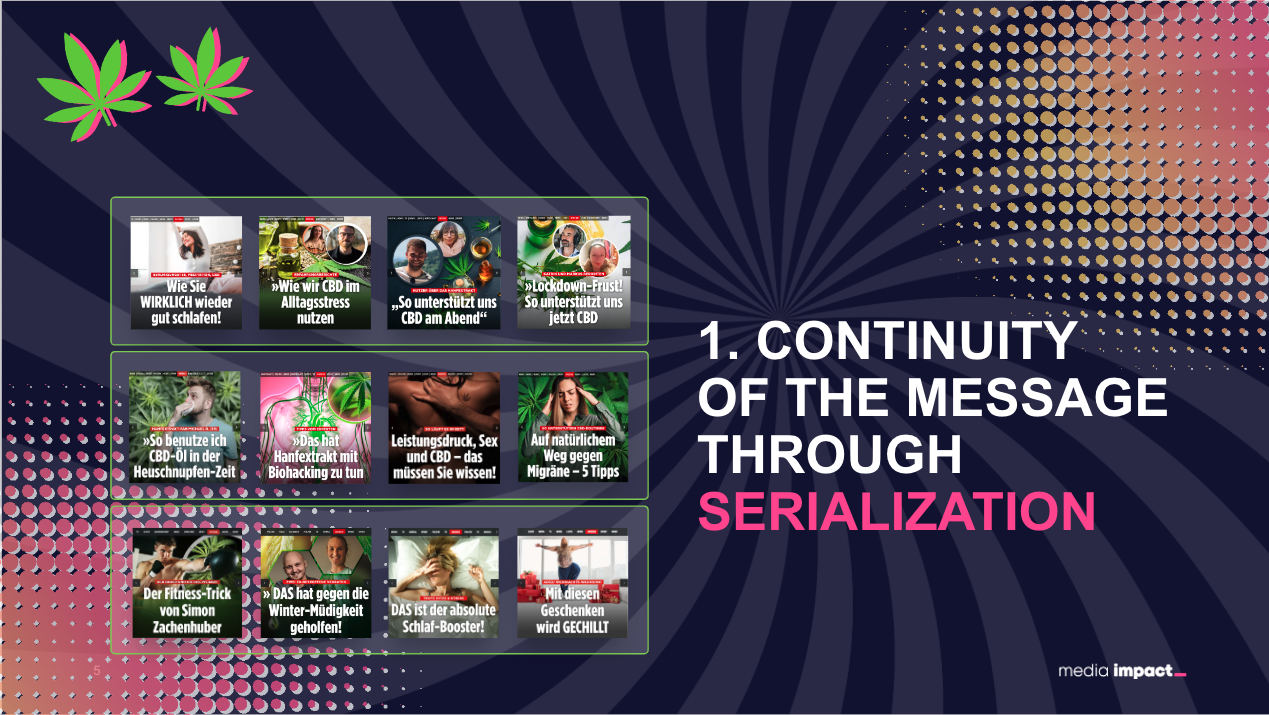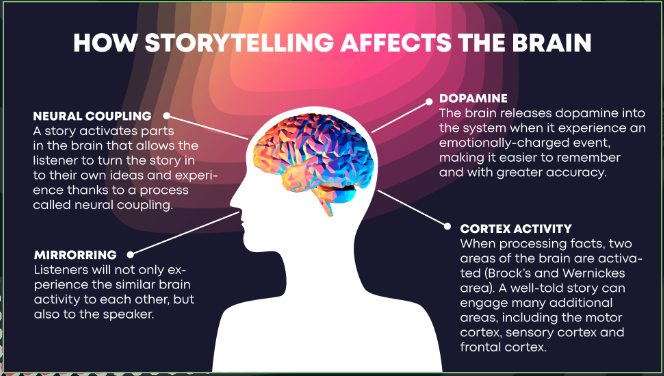
 Details
Details
Axel Springer Brand Studios was charged with turning CBD startup Vaay into Europe’s biggest cannabis brand within just twelve months. It exceeded its brief and managed to achieve a sales uplift of 300 percent!
How did the studio do it and is there a secret formula to branding and performance?
Yvonne Beister, Director of Axel Springer Brand Studios, gives us her thoughts on the power of emotional storytelling in native advertising:
The method: Create a series of brand stories
According to Beister, a way to achieve effective branding and performance is to create a series of brand stories about the theme. The stories build on each other in a meaningful manner, underlining the same and continuous message – in this case, a positive message about CBD.
“Through repetition and message continuity, we could generate a so-called ‘truth effect’ in users‘ minds,” Beister explains. “Advertising messages can be established by repeating and publishing them over and over again.”

A slide from Yvonne Beister's presentation at Native Advertising Days 2022
Axel Springer’s series of brand stories about the benefits of CBD reached its peak during the second coronavirus lockdown in March 2021, each story using the situation and the spirit of the time. According to Beister, this is part of effective storytelling. Everyone was talking about the lockdown and good storytelling ought to reflect emotions and show a connection between the brand, its products and the people.
It’s all about getting the right message out at the right time and ensuring that a repetitive and continuing message doesn’t get stale, Beister says.
“As journalists, we’re able to invent 100 topics about one theme. In our case, the theme was CBD – how CBC helps sportspeople, combat migraines, insomnia, hayfever and lockdown frustration.”
It’s typical journalistic work: researching the topic and finding different ways to tell a story.
Generating an emotional response
Part of effective storytelling, continues Beister, is to use facts to generate genuine emotions. This means gauging the general emotional mood of your audience, using stories that pick up on their emotional state and producing content people can relate to.
During the pandemic, this included themes of family celebrations, the need for hugs and the loneliness many were experiencing.
“We conceived stories that we knew would put a smile on users’ faces, get them thinking about a specific perspective, bringing a solution at the right moment.”
The connection between emotion and memory
Emotional storytelling is key to every successful campaign because it acts as a catalyst for remembering advertising messages.
According to Beister, studies have shown that 70 percent of all the events that are stored in our long-term memories are those connected to very strong emotions. Thus, to get audiences to remember something from a campaign, you’ve got to make them feel something.
“We’ve done a lot of studies about what’s happening in the brain. You get emotional arousal, dopamine is pumping around in your blood,” she says. “When there’s emotional arousal, you keep the story in mind, you’re talking about it with your friends, you’re sharing the story.”

Most importantly for brands, that emotional response often leads to a purchase.
That’s where native advertising has an advantage over traditional methods. According to Beister, native advertising formats trigger 49 percent more positive and subconscious reactions than typical advertising banners or material.
How to boost sales: Retargeting and prospecting
After developing an emotional story, it’s then a matter of retargeting those who read it, says Beister. Readers are retargeted with a special advertisement that’s connected to the story and that leads to the customer’s website.
But Axel Springer also uses another type of targeting known as ‘prospecting’ that allows it to detect special characteristics through certain data trends. These trends are in turn targeted with special advertisements that, again, lead to the customer’s website.
A formula for success
The Axel Springer campaign showed that emotional storytelling is – next to branding and awareness – the biggest performance driver in the market.
Good journalistic and true native storytelling that sets a continuous stimulus by serialising the content, can produce much higher conversions and more leads than classical advertising can ever achieve.